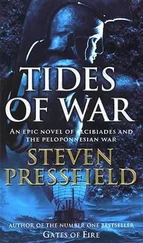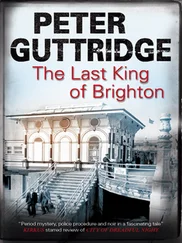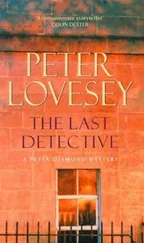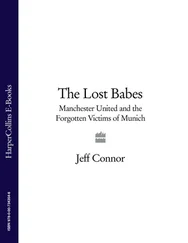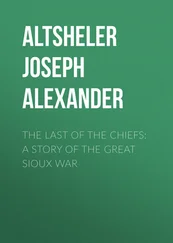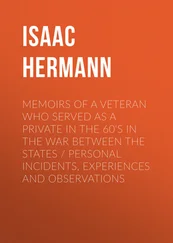1 ...7 8 9 11 12 13 ...17 It was against this background of military and civil unrest that plans were made to celebrate the peace, and Virginia Woolf was not merely voicing the cynicism of pacifist Bloomsbury when she wrote that there was ‘something calculated & politic & insincere’ about the first of these great public events, the Peace Day celebrations in July 1919. In observing that they were ‘some thing got up to pacify & placate “the people”’, she had a point. Although the Armistice had been declared on 11 November 1918, the Treaty of Versailles, which marked the official end of the war, was not signed until 28 June 1919. Peace Day in Britain, which was to be celebrated somewhat paradoxically by a military parade, was originally set for early August to coincide with the anniversary of the outbreak of war. At the suggestion of the King, who wanted this Victory Parade of all the Allies to take place as soon as possible after the signing of the treaty – and possibly did not want to be seen to be lagging too far behind the French, who would celebrate their own victory on Bastille Day, 14 July – the government subsequently moved the date forward to 19 July. Recognising that jubilation would need to be tempered by some acknowledgement of the massive losses Britain suffered in gaining that victory and securing the peace, Lloyd George proposed at a very late stage that a monumental catafalque should be placed on the parade route so that the passing columns of soldiers could salute their dead comrades. Something similar had been planned by the French for their celebrations. Lord Curzon, who headed the Peace Celebrations Committee, declared that a catafalque – technically a raised platform on which a body rests temporarily before a funeral – might do for papist Continentals but would be regarded by the British population as wholly alien. A huge cross at Admiralty Arch was suggested as an unimaginative and somewhat crass alternative, but fortunately someone had the sense to consult Sir Edwin Lutyens, who had been advising on the layout of military cemeteries in France and Belgium.
It was lucky that Lutyens was a quick worker. He produced a design almost immediately – supposedly within ten minutes of the idea being put to him on behalf of Sir Alfred Mond, who, as the First Commissioner of Works, was the government minister responsible for overseeing public buildings and statues. Lutyens’ design was of a symbolically empty sarcophagus on top of a pylon, a rectangular truncated pyramidal tower of the sort often used to flank temples in Egypt. Lutyens thereby transformed a catafalque (on top of which an effigy would logically rest) into a cenotaph, which, he explained, was ‘a monument to a deceased person whose body is buried elsewhere’ and was thus wholly appropriate to the circumstances. He understood that as a focus of national mourning for the whole Empire, with its many races and creeds, the Cenotaph had to be non-denominational. It therefore lacked any Christian symbolism or inscription, much to the displeasure of many in the Church. Its decorations were restricted to religiously neutral wreaths, ribbons and flags and the all-embracing words ‘The Glorious Dead’. Resembling solid stone but in fact constructed from wood and plaster, the Cenotaph was reasonably easy to erect in Whitehall during the fortnight left before the Victory Parade took place. No sooner had it been erected than people began to lay wreaths against it. These piled up to such a degree that they had to be cleared away in order to make room for the troops to march past on Peace Day.
It was originally proposed that the march should pass through the East End, but the Peace Celebrations Committee decided that the residents of Vauxhall, Kennington and Lambeth should be favoured instead on the grounds that they ‘were much more British on the whole than the East End which was largely composed of foreigners’ – in other words Jewish and other immigrants who had settled there and were clearly regarded as insufficiently assimilated, even though many of them had fought in the war. As a consequence, the route was redirected south of the river and would extend no farther east than St George’s Fields in Lambeth. On the morning of Wednesday, 19 July, some 15,000 servicemen from most of the Allied countries, arranged alphabetically (starting with the Americans) and led by the British, French and American commanders-in-chief, Field Marshals Haig, Foch and Pershing, set out from Albert Gate at the south end of Hyde Park, where many of the participants had bivouacked overnight. (Haig was evidently in a better mood than he had been at the Armistice when he refused a summons from Lloyd George to take part in a ceremonial drive through the capital with the French C-i-C and the Prime Ministers of France and Italy, declaring in his diary that he had ‘no intention of taking part in any triumphal ride with Foch, or with any pack of foreigners’.) Missing from this parade of the Allies were troops from the Indian subcontinent, whose contribution to the war had been considerable: some 1.27 million men, 827,000 of them combatants, among whom 49,000 sepoys (infantrymen) were killed in action. When bringing forward the date of the parade at such a late stage, the government had failed to take into consideration how this might affect those who had farthest to come. Working to the original timetable, 1,500 Indian troops had set sail from Bombay on 29 June; on 19 July they were still at sea.
Marching four abreast, the rest of the Allied representatives passed through Belgravia, heading south to cross the river over Vauxhall Bridge, through Kennington and Lambeth and the park where the Imperial War Museum would later stand. From there, they marched back north over the river via Westminster Bridge, past the Houses of Parliament, turning up Whitehall and saluting the Cenotaph as they passed. They then wheeled left through the south-west corner of a packed Trafalgar Square to go down the Mall to salute the King at Buckingham Palace. After this, the column marched along Constitution Hill to Hyde Park Corner, then along the south side of Hyde Park, ending up at Kensington Gardens, where everyone dispersed. As impressive as this parade of living soldiers was, it was as nothing compared with what might have been seen if the dead of the Empire had been able to march past the Cenotaph in their place. Someone made the calculation that if the dead were lined up four abreast in a continuous column, it would take them three and a half days to pass by. If they had set out from the north of England, the first of these ghosts would have reached the Cenotaph just as the last of them was leaving Durham.
The Victory Parade was followed by all manner of public entertainments in the London parks, including open-air concerts and theatrical performances, the climax of which was a massive firework display in which likenesses of the Royal Family, the Prime Minister and British military leaders were pyrotechnically created. In spite of some complaints that the money squandered on celebrating the peace would be better spent on alleviating the problems of unemployed former soldiers, similar peace celebrations took place all over the country, with parades passing through bunting-draped streets lined with cheering crowds.
Not that such events always went off smoothly. When mean-spirited local authorities in Luton refused to allow a group of ex-servicemen to hold a memorial service in a municipal park, the town clerk’s office was torched and firemen were forcibly prevented by incensed veterans from approaching the town hall as it was gutted. The army had to be called in to restore order, the entire town was placed under military occupation for four days, and the bill for damages was reckoned at some £200,000. Hopes that a Peace Day would pacify disgruntled former servicemen were further dashed at Chertsey, where several hundred of them refused to take part in the celebrations because they hadn’t yet secured their pension rights. Similar discontent was felt in Wales, where at Merthyr Tydfil jubilant celebrations were replaced by a sombre service of thanksgiving attended by 22,000 people, followed by a meeting at which a resolution was passed calling for higher pensions for former servicemen and their dependants. In Manchester unemployed servicemen held their own parade, carrying placards demanding better treatment. Elsewhere former soldiers boycotted the celebrations. They felt they had done quite enough marching during their war service and certainly weren’t going to turn out on parade for what they regarded as a display of militarism.
Читать дальше

